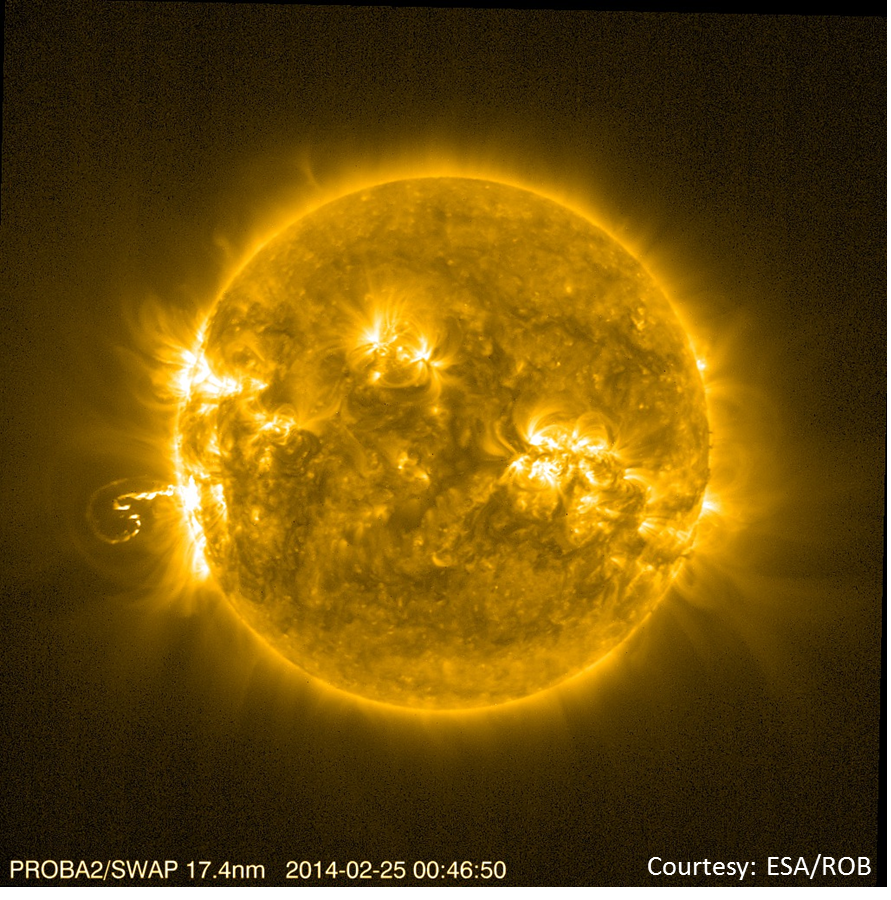UPDATE (14:30UT): The proton flux has exceeded the event threshold. It is currently a minor radiation storm (S1). Recent imagery from SOHO's coronagraphs indicate that the associated CME is an asymmetric halo event, as can be seen in these difference images. Though the bulk is directed away from Earth, we may still experience a glancing blow from this CME. The speeds calculated from this CME currently show a large dispersion (CACTUS). Thus, a prudent estimate for its arrival is the afternoon of 27 February, with only active geomagnetic conditions expected.
A strong X-class solar flare peaked at 00:49UT today. It reached X4.9 and originated in sunspot region NOAA 1990 near the southeast solar limb. This region is the return of old NOAA 1944 (1-14 January) and NOAA 1967 (27 January - 9 February) from earlier this year. These regions were the source of numerous medium to strong solar flares, and NOAA 1990 seems to continue this tradition. The X4.9 flare was the third strongest solar flare so far this solar cycle, after the X6.9 flare on 9 August 2011 (NOAA 1263) and X5.4 flare on 7 March 2012 (NOAA 1429).

A movie of the event can be seen here. These SDO-images show the flare in successively lower temperatures and closer to the solar surface: From the multi-million degrees corona to the relatively cool (about 6000 degrees) photosphere. The "hot" images provide a better view of the flare (AIA 131) and the post-flare coronal loops (AIA 171; 600.000 degrees), whereas the "cooler" images (AIA 304; 80.000 degrees) give a better view on the ejected material. The intensity images also show the flare for a brief moment (2 white dots over the dark cores of the sunspot), suggesting this event was a rare white light flare (awaiting reports from ground-based observations).

The core filament of the associated coronal mass ejection (CME) is directed away from the Earth. In view of the proximity to the limb, no geomagnetic effects from this fast and impressive CME are expected (pending the availability of further images). The flare was also associated to a proton enhancement (fast energetic particles). However, in view of the slow rise of the proton flux, it is expected that the event threshold will not be reached.
NOAA 1990 has just started its transit over the solar disk. In the next few days, it will become better visible thus allowing for a better assessment of its flaring potential. Any flare associated CME may then become better directed to Earth and produce geomagnetic disturbances.

 |
 |





